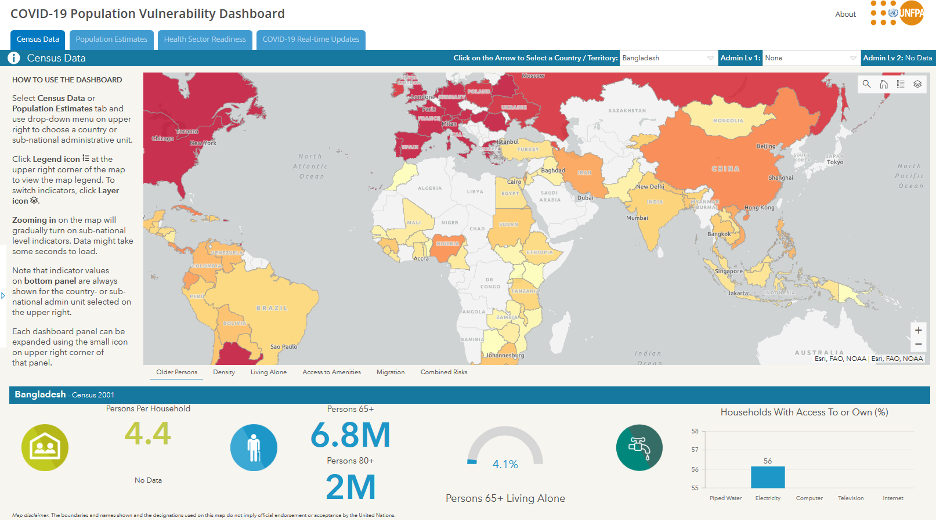By Lara Cleveland
Since the onset of the COVID-19 outbreak, researchers across the globe have been accessing census microdata from IPUMS International for COVID-19-related research. Scholars at universities from the U.S. to Nepal, Columbia to Belgium, Nigeria to China, and elsewhere have used IPUMS data to assess population dynamics contributing to COVID-19 vulnerability or spread. Divisions of the United Nations, World Bank, and other policy research institutes have similarly accessed IPUMS census data for COVID response and relief efforts.
IPUMS International harmonizes and disseminates household-level microdata census samples from more than 100 countries. Access to microdata is essential for rapid response in new areas because of its analytic flexibility. Researchers needing to build custom tables or construct variables for complex modeling suited to specific research questions can only do that with microdata. Of particular interest for research on population dynamics of COVID-19 is information about the age structure of the population, household living arrangements (household size, intergenerational co-residence, etc.), indicators of health vulnerability (age, work status, housing conditions, disability, etc.), healthcare workforce distribution, and migration patterns. IPUMS International census samples also include valuable subnational geographic identifiers at the first and second administrative levels, which are especially useful for highlighting particular regions or localities of vulnerability.
The surge in new or renewing IPUMS International data user applications listing COVID-related research topics provides only a glimpse of how IPUMS is being used to aid in pandemic response efforts. Many existing IPUMS users are also turning their research focus toward pandemic response. For example, long-time IPUMS colleagues, Esteve et al.,1 analyzed how national age and co-residence patterns shape COVID-19 vulnerability using data entirely from IPUMS International (see figure below). The paper, published in the Proceedings of the National Academy of Sciences, simulates COVID-19 outbreak in 10% of the population to investigate mortality vulnerability by country based on national age and co-residence patterns.

Over the summer, researchers at IPUMS calculated a series of population-based indicators from census microdata for the UNFPA’s COVID-19 Population Vulnerability Dashboard2, which maps demographic characteristics contributing to COVID-19 vulnerability (outbreak, spread, or mortality). The resulting dashboard went live in July, and includes additional data layers from WorldPop, the World Health Organization (WHO), and the Johns Hopkins University Coronavirus COVID-19 Global Cases Dashboard. Interestingly enough, the WHO measures of healthcare workforce prevalence also relied, in part, on occupational information from the census samples in IPUMS International. The interactive dashboard aims to provide health workers, policy makers, and the public with important information about vulnerable populations to aid in preparedness and response to COVID-19.

We would love to hear about your COVID-19-related research! Send us a note (ipums@umn.edu), and make sure to submit your work to our bibliography. It is particularly difficult for us to track down work on dashboards, indicators, and policy briefs using IPUMS data. We depend upon you to let us know how you have used the data. All of your research products help us give back to our national data partners and secure future funding.
Census microdata samples from IPUMS International belong to the countries that partner with us. IPUMS adds standardization, harmonization, and documentation work in order to save researchers countless hours of data preparation. We are grateful to the many countries who choose to share their data so that we can all use it for good!
- Esteve, Albert, Inaki Permeyer, Diederick Boertien, James Vaupel. 2020. “National age and coresidence patterns shape COVID-19 vulnerability.” Proceedings of the National Academy of Sciences, July 14, 2020, 117 (28): 16118-16120; first published June 23, 2020 https://doi.org/10.1073/pnas.2008764117 (https://www.pnas.org/content/117/28/16118)
- 2020. COVID-19 Population Vulnerability Dashboard (https://covid19-map.unfpa.org).




